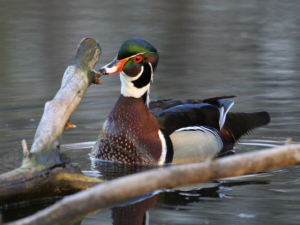Duck populations are strong, according to the U.S. Fish and Wildlife Service 2013 Report on Trends in Duck Breeding Populations. The preliminary estimate of total duck populations from the traditional survey area (north-central United States, south-central and northern Canada, and Alaska) is 45.6 million birds. This estimate represents a 6 percent decrease from last year’s estimate of 48.6 million birds but is still 33 percent above the long-term average. The total duck estimate excludes scoters, eiders, long-tailed ducks, mergansers and wood ducks.
The report also notes:
• Estimated mallard abundance is 10.4 million birds, similar to the 2012 estimate of 10.6 million birds and 36 percent above the long-term average.
• Blue-winged teal estimated abundance is 7.7 million. Although this is 16 percent below the 2012 estimate of 9.2 million, the blue-wing population is 60 percent above the long-term average. Similarly, the green-winged teal estimate of 3.1 million is 12 percent below last year but still 51 percent above their long-term average.
• The northern pintail estimate of 3.3 million is similar to the 2012 estimate of 3.5 million and 17 percent below the long-term average.
• Estimated abundance of American wigeon is 2.6 million and 23 percent above the 2012 estimate and similar to the long-term average.
• The combined lesser and greater scaup estimate of 4.2 million decreased 20 percent from last year and is 17 percent below the long-term average of 5 million. The canvasback estimate of 787,000 is similar to the 2012 estimate and 37 percent above the long-term average.
Despite a delayed spring throughout most of the traditional survey area, habitat conditions during the 2013 survey were generally improved or similar to last year due to above-average precipitation. Most of the Canadian portions of the traditional survey area were rated as good to excellent, in contrast to 2012 where drier conditions existed across northern Alberta and Saskatchewan. Although the U.S. prairies received record snowfall in April, habitat conditions were still rated only fair to poor, similar to last year. The total pond estimate (prairie Canada and the north-central United States combined) is 6.9 million, 24 percent higher than the 2012 estimate of 5.5 million ponds and 35 percent above the long-term average.
In the eastern survey area — eastern Ontario, Quebec, the Maritime Provinces and Maine — estimated mallard abundance is 500,000 birds. The black duck estimate is 622,000. Habitat conditions across most of the eastern survey area generally were good with the exception of Maine and the southern Maritimes, which were rated only as fair.
The surveys are conducted by the U.S. Fish and Wildlife Service and Canadian Wildlife Services’ Waterfowl Breeding Population and Habitat Survey, sampling more than 2 million square miles of waterfowl habitat across Alaska, the north-central and northeastern United States and south-central, eastern and northern Canada. Information is not included from surveys conducted by state or provincial agencies.
The annual survey guides the Service’s waterfowl conservation programs under authority of the 1918 Migratory Bird Treaty Act. The Service works in partnership with state biologists from the four flyways – the Atlantic, Mississippi, Central and Pacific – to establish regulatory frameworks for waterfowl hunting season lengths, dates and bag limits.
For more information about the surveyed areas, the survey methodology and the estimates, the Trends Report in Duck Breeding Populations, 1955-2013 report can be downloaded from the Service’s Web site atwww.fws.gov/migratorybirds.






